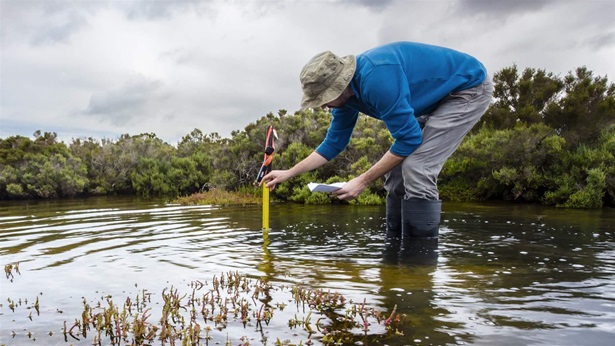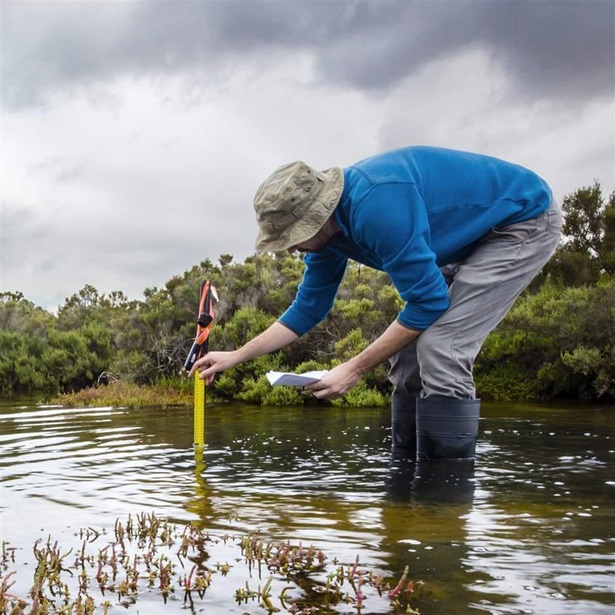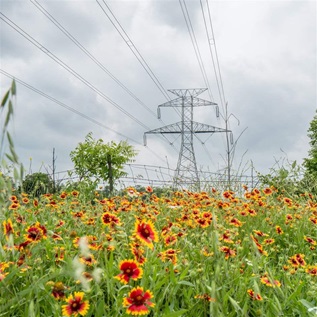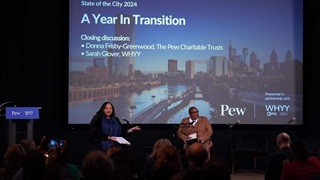With Rivers, Lakes, and Wetlands in Decline, Biden Administration Sets New Conservation Goals
Pew partners with states, Tribes, and others on solutions to sustain benefits of wetlands and waterways to wildlife, climate, and people

Across the U.S., rivers, lakes, wetlands, and other freshwater resources that are invaluable to the country’s ecological and economic health face dire threats. In response, the Biden administration last week announced The America the Beautiful Freshwater Challenge: A Partnership to Conserve and Restore America’s Rivers, Lakes, Streams, and Wetlands, with a goal to conserve 8 million acres of wetlands and protect, reconnect, or restore 100,000 miles of rivers and streams by 2030.
This freshwater challenge underscores what many states, conservationists, public officials, and entities already have experienced firsthand: The country’s rivers, lakes, and wetlands are imperiled. The administration’s announcement follows the U.S. Fish and Wildlife Service’s decennial “Wetlands Status and Trends Report,” which revealed that the continental U.S. has lost more than half its wetlands in the past 150 years and that loss rates increased by 50% from 2009 to 2019—and will accelerate unless action is taken.
Healthy rivers and streams as well as freshwater and saltwater wetlands—including tidal forested wetlands, salt marshes, peatlands, and seagrasses—provide significant benefits, such as protecting coastlines from erosion, reducing the impact of flooding, sheltering and nourishing fish and other wildlife, and sequestering climate-warming carbon. The main causes of decline for all of these ecosystems have changed over time and are now primarily driven by development, dams and other barriers, pollution, agriculture, and sea-level rise and other effects of climate change.
Focus on solutions
The Pew Charitable Trusts works with states, Tribal Nations, local communities, small-business owners, scientists, and outdoor enthusiasts to reverse these declines by protecting and restoring freshwater resources and wetlands, helping to conserve freshwater resources and sustain local economies that depend on these assets. Examples of Pew’s collaborative work include:
- Partnering with local organizations and state agencies in Colorado, New Mexico, Oregon, and Washington state to designate eligible rivers as Outstanding National Resource Waters, which protects water quality, biodiversity, and recreational opportunities that power local economies. These efforts have collectively reconnected 1,800 river miles.
- Collaborating with federal and state governments, the Department of Defense, community members, and scientists to conserve 1 million acres of salt marsh from North Carolina to Florida. This vast habitat, which is threatened by sea-level rise, supports the region’s rich cultures and safeguards communities and more than a dozen military installations.
- Collaborating with landowners, small-business owners, sportsmen, and others to safeguard more than 450 miles of New Mexico’s Gila and San Francisco rivers and their tributaries as wild and scenic, the highest federal protection for rivers. These waterways form one of the largest undammed watersheds in the continental U.S. A 2020 Pew-commissioned report found that outdoor recreation in the watershed supports nearly 4,000 jobs and generates roughly $427 million in annual spending.
- Working with partners in Oregon to ensure that management plans for the state’s numerous estuaries address threats from climate change. Pew also supported the state’s new commitment to ensure that natural and working lands—including coastal wetlands—are protected, conserved, and restored so that they can continue to sequester carbon. In addition to capturing and storing carbon at rates comparable to that of old-growth forests, these habitats support culturally significant and at-risk salmon species.
- Helping North Carolina and Oregon develop their first blue carbon inventories, which allow officials to better understand how much carbon these habitats sequester. Conserving “blue carbon” habitats—tidal forested wetlands, salt marshes, and seagrasses—can help slow climate change by sequestering carbon.
Oversized Benefits of Wetlands and Freshwater Habitats
Although wetlands occupy less than 6% of the continental U.S. (wetlands can be freshwater, saltwater, or a combination) and exclusively freshwater ecosystems cover less than 1% of Earth’s surface, the habitats combined provide substantial economic and environmental benefits. These include stemming damage from natural disasters, such as floods, drought, and wildfire, and providing food, clean water, recreation, and cultural resources for communities, including Tribes.
Lakes, rivers, and streams
- Home to at least 10% of Earth’s species and 40% of the world’s fish species.
- Support greatest animal species richness per area of any habitat type.
- Are the principal supply of people’s drinking water.
All wetlands
- Provide economic value 11 times greater than that of lakes and rivers, 36 times higher than that of forests, and 33 times more than that of grasslands.
- Generate a projected $7.7 trillion in value annually to commercial fishing, water quality and supply, recreation, and flood control.
- Offer habitat for about 40% of all plant and animal species, including half of all endangered species.
Pew remains committed to partnering with the federal government, states, communities, Tribes, and others to protect and restore the lakes, rivers, streams, estuaries, and wetlands that are so critical to human health, the nation’s prosperity, and the resiliency of U.S. communities.
Jennifer Browning leads The Pew Charitable Trusts’ U.S. conservation project.
Spotlight on Mental Health


MORE FROM PEW
Explore Pew’s new and improved
Fiscal 50 interactive
Your state's stats are more accessible than ever with our new and improved Fiscal 50 interactive:
- Maps, trends, and customizable charts
- 50-state rankings
- Analysis of what it all means
- Shareable graphics and downloadable data
- Proven fiscal policy strategies
Welcome to the new Fiscal 50
Key changes include:
- State pages that help you keep track of trends in your home state and provide national and regional context.
- Interactive indicator pages with highly customizable and shareable data visualizations.
- A Budget Threads feature that offers Pew’s read on the latest state fiscal news.














